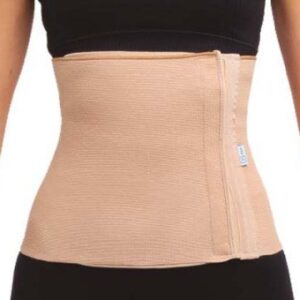Scoliosis
Scoliosis is a condition characterised by an abnormal lateral curvature of the spine, which can take the form of an "S" or "C" and usually occurs during the period of rapid growth before puberty. Scoliosis can vary in severity, being categorised as mild, moderate or severe.
Most common pathologies
in the lumbar spine and trunk
Symptoms
A visible lateral curvature of the spine, usually evident when a person is standing; Asymmetry in the back (shoulder blades) or shoulders; Unevenness of the hips when a person is standing; Stiffness in the back muscles due to altered posture; Back pain, especially if the scoliosis is severe.
Risk Factors
Genetic predisposition; Female gender before puberty; Neuromuscular conditions such as cerebral palsy or muscular dystrophy; Spinal injuries or trauma can contribute to the development of scoliosis.
Protective Factors
Early detection can facilitate early interventions; Physical exercises that strengthen the back and core muscles.
Treatment
Physiotherapy with specific exercises to strengthen the back muscles and improve posture; Use of orthoses or waistcoats may be recommended to help correct the curvature, especially in adolescents who are still growing, type XX; In severe cases, when other measures are not effective or when the curvature continues to progress, surgery may be considered to correct the scoliosis.
Information: All the information contained here is merely a summary for a general understanding of the pathologies, highlighting their definition, symptoms, risk factors, protective measures and treatment options.
Consulting a specialised health professional is essential for an accurate diagnosis and an effective treatment plan.
Support and protection for Scoliosis
Discover all the orthotics for Scoliosis
-
Seleccione Opções This product has multiple variants. The options may be chosen on the product page
-
Seleccione Opções This product has multiple variants. The options may be chosen on the product page
-
Seleccione Opções This product has multiple variants. The options may be chosen on the product page
-
Seleccione Opções This product has multiple variants. The options may be chosen on the product page
-
Seleccione Opções This product has multiple variants. The options may be chosen on the product page
-
Seleccione Opções This product has multiple variants. The options may be chosen on the product page
-
Seleccione Opções This product has multiple variants. The options may be chosen on the product page
-
Seleccione Opções This product has multiple variants. The options may be chosen on the product page
-
Seleccione Opções This product has multiple variants. The options may be chosen on the product page
-
Seleccione Opções This product has multiple variants. The options may be chosen on the product page
-
Seleccione Opções This product has multiple variants. The options may be chosen on the product page
-
Seleccione Opções This product has multiple variants. The options may be chosen on the product page
-
Seleccione Opções This product has multiple variants. The options may be chosen on the product page














